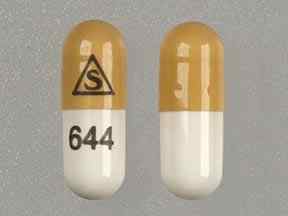Tacrolimus and Alcohol/Food Interactions
There are 2 alcohol/food/lifestyle interactions with tacrolimus.
Tacrolimus Food/Lifestyle
Major Food Interaction
GENERALLY AVOID: Grapefruit and/or grapefruit juice may increase the plasma concentrations of tacrolimus. The proposed mechanism for the interaction is inhibition of CYP450 3A4-mediated first-pass metabolism in the gut wall by certain compounds present in grapefruit. Inhibition of hepatic CYP450 3A4 may also contribute. Although clinical data are lacking, this interaction may result in increased risk of serious adverse reactions such as nephro- and neurotoxicity, as well as other adverse effects associated with tacrolimus such as malignancies, infections, diabetes, hyperkalemia, hypertension, and QT prolongation.
GENERALLY AVOID: Alcohol may modify the rate of tacrolimus release from extended release formulations, thereby potentially increasing the risk of serious adverse reactions.
ADJUST DOSING INTERVAL: Coadministration with food decreases the rate and extent of tacrolimus absorption. This effect is greatest after a high-fat meal.
MANAGEMENT: Patients should avoid consumption of food or drink containing grapefruit during treatment with tacrolimus. Concomitant use of tacrolimus, especially extended release formulations, with alcohol should also be avoided. Tacrolimus extended release formulations should be administered on an empty stomach, at least 1 hour before or 2 hours after a meal, and tacrolimus immediate release formulations should be taken consistently every day with or without food.
References (18)
- (2001) "Product Information. Prograf (tacrolimus)." Fujisawa
- Hooks MA (1994) "Tacrolimus, a new immunosuppressant--a review of the literature." Ann Pharmacother, 28, p. 501-11
- (2022) "Product Information. Adoport (tacrolimus)." Sandoz Ltd
- (2024) "Product Information. TACrolimus (Sandoz) (TACrolimus)." Sandoz Pty Ltd
- (2023) "Product Information. Prograf (tacrolimus)." Astellas Pharma US, Inc
- (2023) "Product Information. Astagraf XL (tacrolimus)." Astellas Pharma US, Inc
- (2025) "Product Information. Envarsus XR (tacrolimus)." Veloxis Pharmaceuticals
- (2024) "Product Information. Prograf (tacrolimus)." Astellas Pharma Canada Inc
- (2024) "Product Information. Advagraf (tacrolimus)." Astellas Pharma Canada Inc
- (2024) "Product Information. Envarsus PA (tacrolimus)." Endo Operations LTD
- (2024) "Product Information. Dailiport (tacrolimus)." Sandoz Ltd
- (2025) "Product Information. Prograf (tacrolimus)." Astellas Pharma Ltd
- (2025) "Product Information. Envarsus (tacrolimus)." Chiesi Ltd
- (2025) "Product Information. Advagraf (tacrolimus)." Astellas Pharma Ltd
- (2025) "Product Information. Modigraf (tacrolimus)." Astellas Pharma Ltd
- (2024) "Product Information. Advagraf XL (TACrolimus)." Astellas Pharma Australia Pty Ltd
- (2024) "Product Information. proGRAF (TACrolimus)." Astellas Pharma Australia Pty Ltd
- (2024) "Product Information. TACrolimus XR (Sandoz) (TACrolimus)." Sandoz Pty Ltd
Switch to consumer interaction data
Tacrolimus High Blood Pressure (Hypertension)
Moderate Potential Hazard, Moderate plausibility
tacrolimus - hypertension
The use of tacrolimus has been associated with hypertension. Therapy with tacrolimus should be administered cautiously in patients with elevated blood pressure. Close monitoring of blood pressure is recommended.
References (1)
- (2001) "Product Information. Prograf (tacrolimus)." Fujisawa
Switch to consumer interaction data
Tacrolimus drug interactions
There are 884 drug interactions with tacrolimus.
Tacrolimus disease interactions
There are 7 disease interactions with tacrolimus which include:
- diabetes mellitus
- hepatic dysfunction
- infections
- QT interval prolongation
- renal dysfunction
- hyperkalemia
- hypertension
More about tacrolimus
- tacrolimus consumer information
- Check interactions
- Compare alternatives
- Pricing & coupons
- Reviews (50)
- Drug images
- Latest FDA alerts (3)
- Side effects
- Dosage information
- During pregnancy
- Drug class: calcineurin inhibitors
- Breastfeeding
- En español
Related treatment guides
Drug Interaction Classification
| Highly clinically significant. Avoid combinations; the risk of the interaction outweighs the benefit. | |
| Moderately clinically significant. Usually avoid combinations; use it only under special circumstances. | |
| Minimally clinically significant. Minimize risk; assess risk and consider an alternative drug, take steps to circumvent the interaction risk and/or institute a monitoring plan. | |
| No interaction information available. |
See also:
Further information
Always consult your healthcare provider to ensure the information displayed on this page applies to your personal circumstances.


